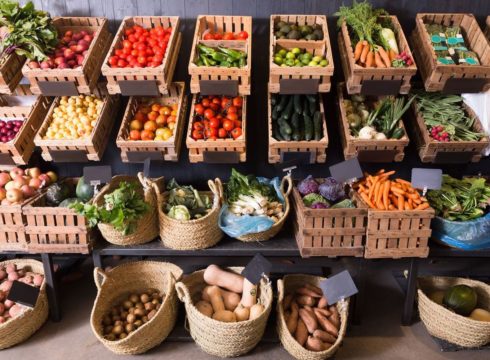Amazon is exploring the possibility of conducting pilot tests for its shelf monitoring solution in various other regions
Betting big on Amazon Fresh, the company introduced the shelf monitoring solution last month, a machine learning-powered farm-to-fridge quality assurance system for fresh produce
Rajeev Rastogi, Vice President of International Machine Learning at Amazon, said that for the grocery system, the paramount customer input is the quality of the produce
Inc42 Daily Brief
Stay Ahead With Daily News & Analysis on India’s Tech & Startup Economy
Ecommerce giant Amazon is considering extending its shelf-monitoring solution — originally launched in India — for pilot tests in multiple regions.
Betting big on Amazon Fresh, the company introduced the shelf monitoring solution in India last month, a machine learning-powered farm-to-fridge quality assurance system for fresh produce. With this system, Amazon aims to enable its sellers to meet the consumer demands for high-quality fresh fruits and vegetables.
Rajeev Rastogi, Vice President of International Machine Learning at Amazon, told ET that for the grocery system, the paramount customer input is the quality of the produce, which serves as the primary factor driving repeat purchases. He added that manual assessment is neither scalable nor very reliable due to its proneness to errors.
The store shelf monitoring solution utilises computer vision models and Wi-Fi-enabled IoT cameras. These technologies work together to identify predefined defects in fruits and vegetables by analysing images of crates as input data.
The shelf monitoring solution currently supports manual monitoring through a Johari mobile app and automated monitoring using cameras installed on top of produce shelves. In manual monitoring, operators use the Johari app to submit a produce crate image taken freely from their smartphone.
Rastogi elaborated that there are two kinds of models at play: the first model recognises individual pieces of produce and uses segmentation techniques to identify each item within the container. The second model is designed to detect flaws in the produce itself, such as cracks, cuts, or pressure damage.
In the traditional manual monitoring system, assessing a crate of produce takes about 6 minutes. Interestingly, the automated monitoring system offers a similar evaluation experience but speeds up the process by automatically capturing images of the produce using in-store or shelf-mounted cameras at regular intervals.
Amazon Fresh has expanded to more than 60 cities in India, against only 22 cities a year back. Srikant Sree Ram, director of Amazon Fresh, said earlier that more than 50% of its customers are from Tier-II and III cities.
The growing demand for online grocery shopping has been undeniable, especially after the pandemic, but the execution of these business models comes with significant challenges. Smooth inventory management, the operation of dark stores, and the integration of technology all present substantial hurdles for players in this space, including companies like Zepto, Blinkit, Swiggy Instamart, and others.
The expansion of online grocery is anticipated to extend into Tier II and beyond markets, driven by prominent industry players. In the calendar year 2023, the market is projected to witness growth in Tier II regions, led by horizontal players, while the adoption of quick commerce services is expected to remain consistent, a report by RedSeer stated.
Note: We at Inc42 take our ethics very seriously. More information about it can be found here.


